Homeowners with copper piping often ask whether it can turn their water green? It's a common worry among people who use copper pipes for their home's plumbing system. As a result, we did significant research into the topic and found an answer.
Copper pipes can turn your water green. It's a direct side effect of the pipes releasing copper into the water supply. In these cases, you'll notice a metallic taste accompanying this greenish water.
However, this answer only covers a small portion of this topic. You'll also need to know what's causing it and several other pieces of information. But we've got you covered as the following discussions will cover everything about copper piping and green water.
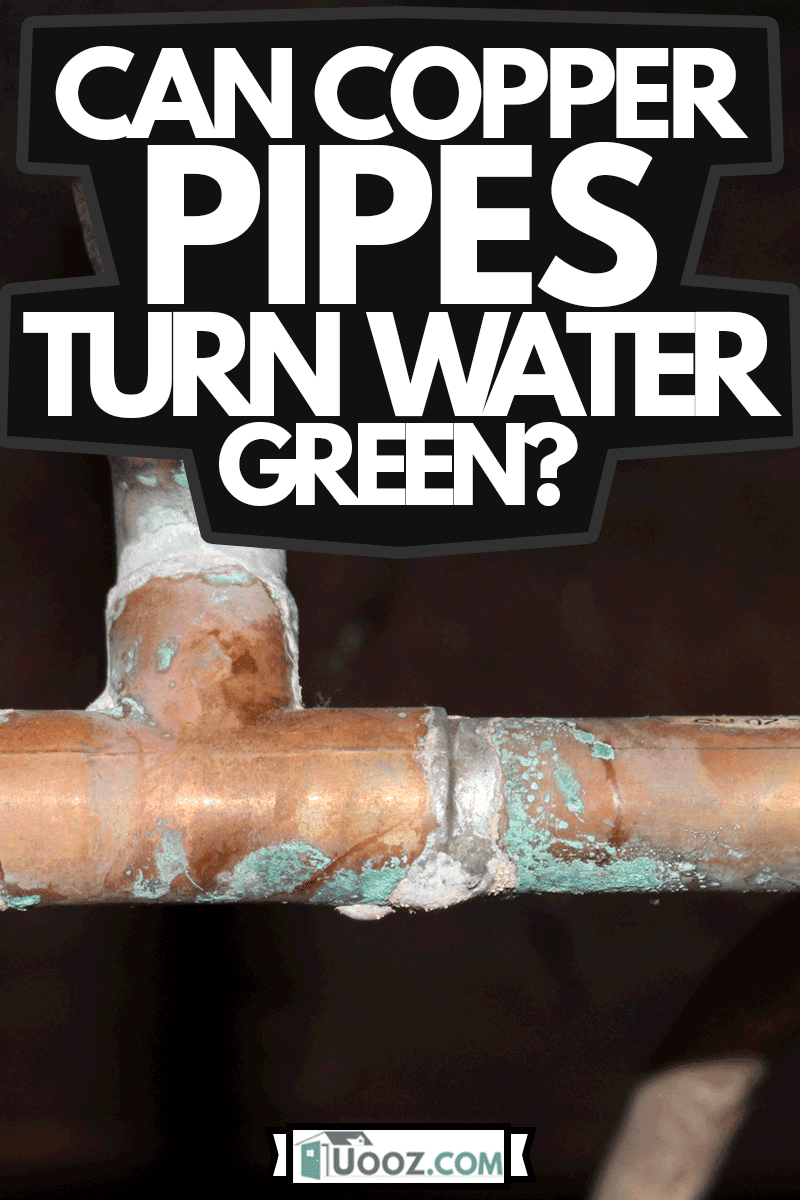
What Causes Copper Pipes to Turn Water Green?
If your water is green, it's most likely due to corroded copper pipes. These pipes are causing your home's water to have higher copper levels, which causes the green coloring. The process itself is relatively simple to understand.
As your pipes corrode, copper dissolves into the water that's transported into your home. It will then turn the water into a blueish-greenish color. You won't have to worry about this issue often as copper piping functions well for about 20 to 30 years.
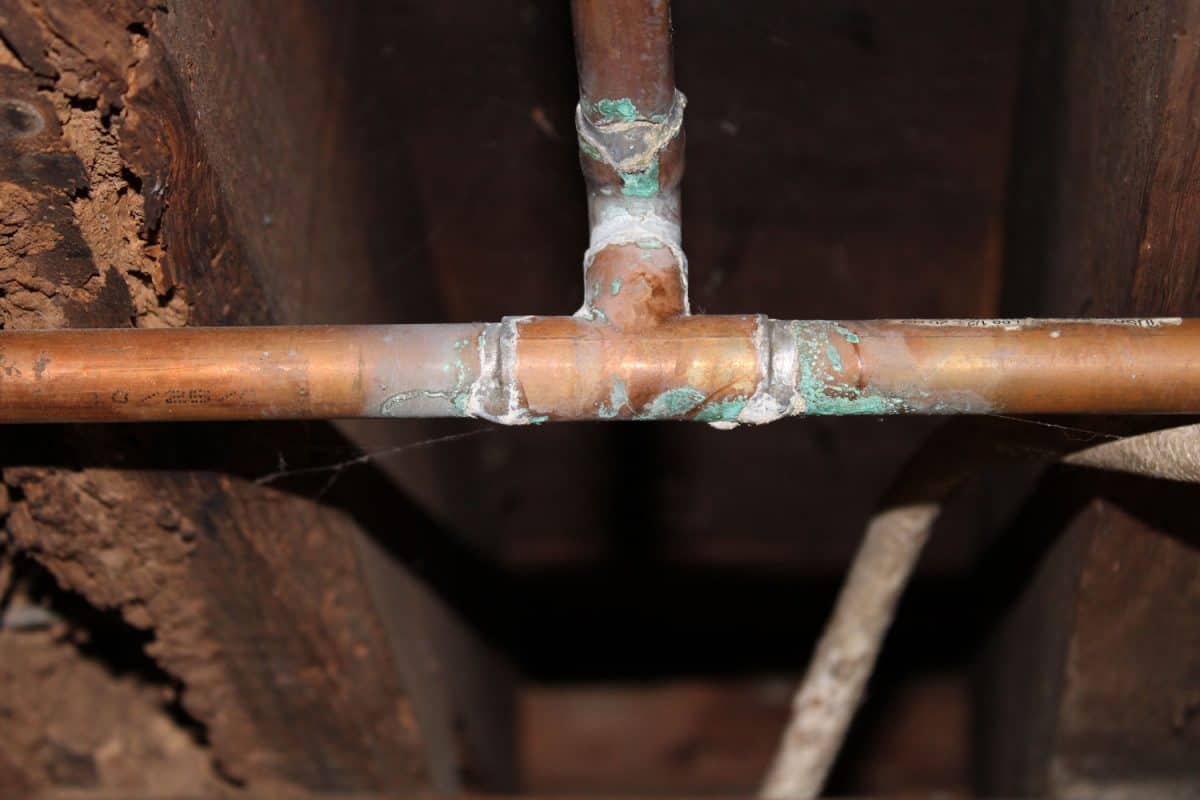
But anyone with 20-year old copper plumbing or older might have an issue. Those pipes are corroding, likely due to natural wear and tear. However, copper pipes can corrode faster than expected when encountering certain situations:
- pH imbalance of the water: If the pH levels are lower than 7.0 or higher than 8.5, the water will likely corrode your copper pipes.
- High concentration of other chemicals/organisms: Some problem-causing ones include dissolved oxygen, salts, and bacteria.
- Sand, sediment, and grit scraping: Regular scraping against the pipe can quicken corrosion.
- High water velocity: It can wear down the pipe's inner lining to cause corrosion.
Does Green Water Have Harmful Side Effects?
Greenish or bluish water can be harmful to your body in various ways. As we mentioned earlier, this tinted water is caused by excessive copper levels. If humans absorb too much copper (through their skin, ingestion, or inhalation), it can result in:
- Higher risk of kidney disease and liver problems
- Nausea
- Vomiting
- Diarrhea
In other words, it's nothing a person wants to mess around with inside their homes. So you'll need to figure out a solution to fix your plumbing system as soon as possible.
Is There Too Much Copper in Your Water?
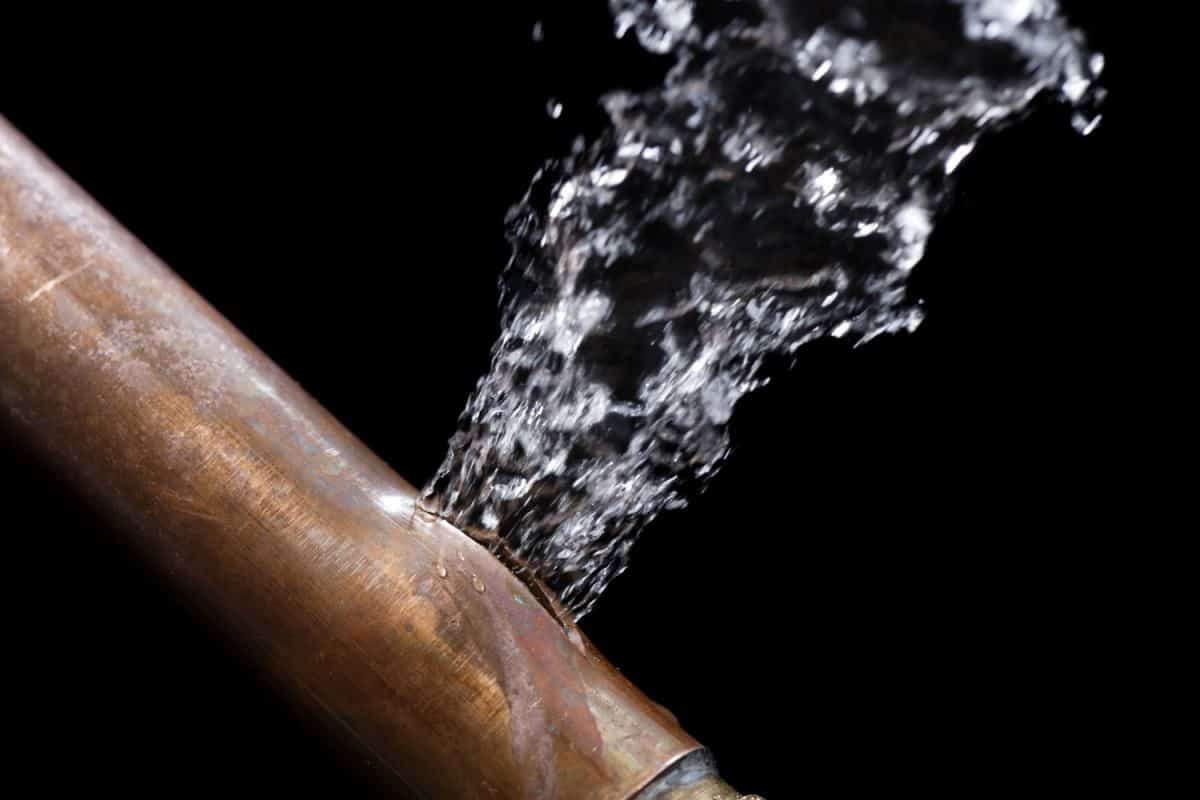
If you're unsure whether your water has too much copper, the next step is easy. It's time to have your water tested by water quality professionals. These experts will do the job and provide you with all the necessary information.
But it's essential to have a general idea of how much copper is too much. So the World Health Organization states that copper levels shouldn't exceed 2.0 milligrams per liter. However, copper levels above 1.0 milligrams per liter can still cause plumbing and health issues.
Is Copper Piping Safe for Drinking Water?
It's obvious to wonder if copper piping is safe for drinking water? However, copper piping has been a common choice over other plumbing materials for many homeowners and builders. This is because they're proven highly reliable and safe for the job within certain situations.
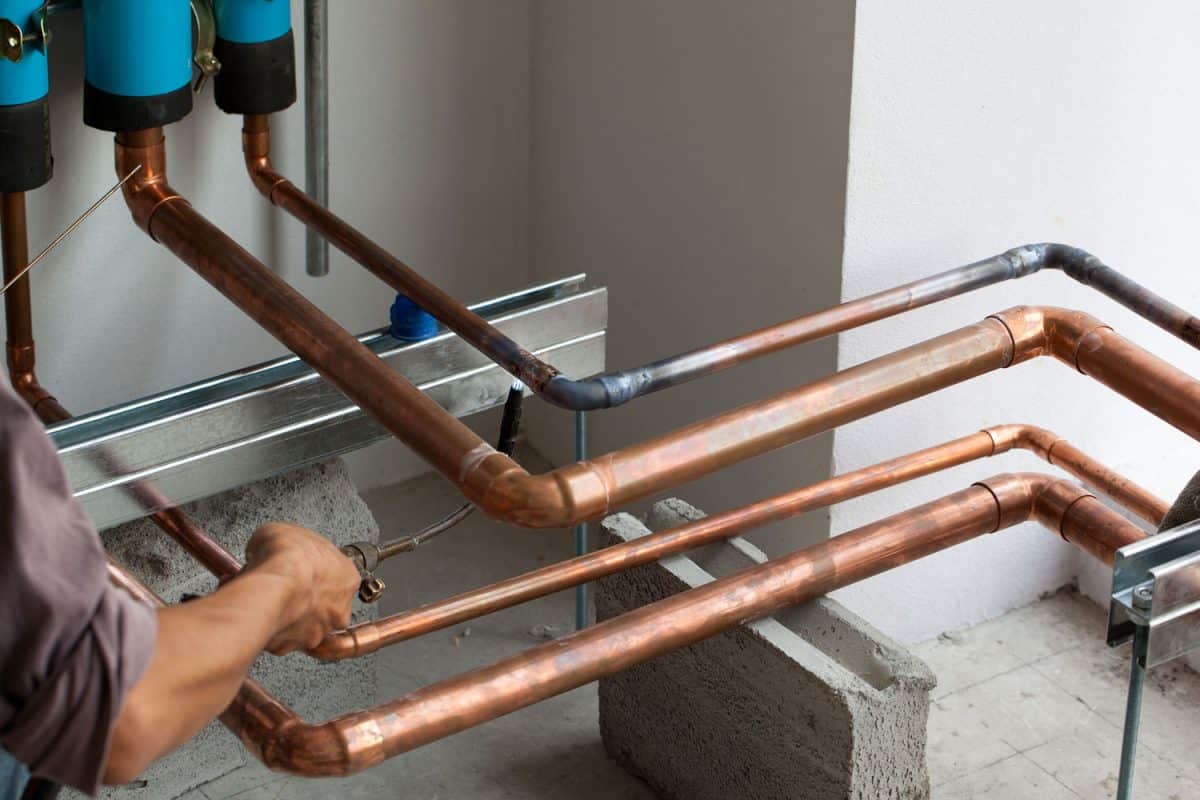
For instance, copper piping joined with lead-free solder is ideal for less-acidic water. It has a solid reputation for offering safe usage. Many experts consider it the best pipe water for drinking supply within these conditions.
But anyone worried about using copper piping should contact a professional with a solid reputation. These experts will provide the scope on whether going with copper is best for your particular situation.
However, we'll provide a head start with a small outline of the pros and cons. Then, it'll give you a better idea of why copper pipes are such a popular commodity:
Pros of Copper Pipes
Most homeowners use copper pipes due to them increasing the home's value. Moreover, they're safer than galvanized pipes because they don't contain lead. It makes them a much easier sell for prospective buyers.
Copper pipes also make plumbers' jobs easier by being more form-fitting than PVC pipes. In other words, copper pipes are smaller in diameter to allow a more effortless fit into tight places. They end up being a convenient choice.
In addition, copper pipes are biostatic, so they inhibit bacterial growth. It's why water is safe to drink from for humans and used within home plumbing systems.
Other notable benefits include being more resistant to flame than PVC pipes, better earthquake resistance, and limiting internal mineral buildup.

Cons of Copper Pipes
One downside to copper pipes is their proneness to fail when the water temperature exceeds 180 degrees. You can also expect condensation to form inside the pipes, which can cause water flow blockage.
Copper pipes cause water to taste slightly metallic, as well. Repairs and install costs for these pipes aren't a picnic, either, as they're easily more than PVC options.
If you’re looking for more information on copper pipe pricing, check out our article, “How Much Are Copper Pipes Worth.”
Why are my Copper Water Pipes Turning Green?
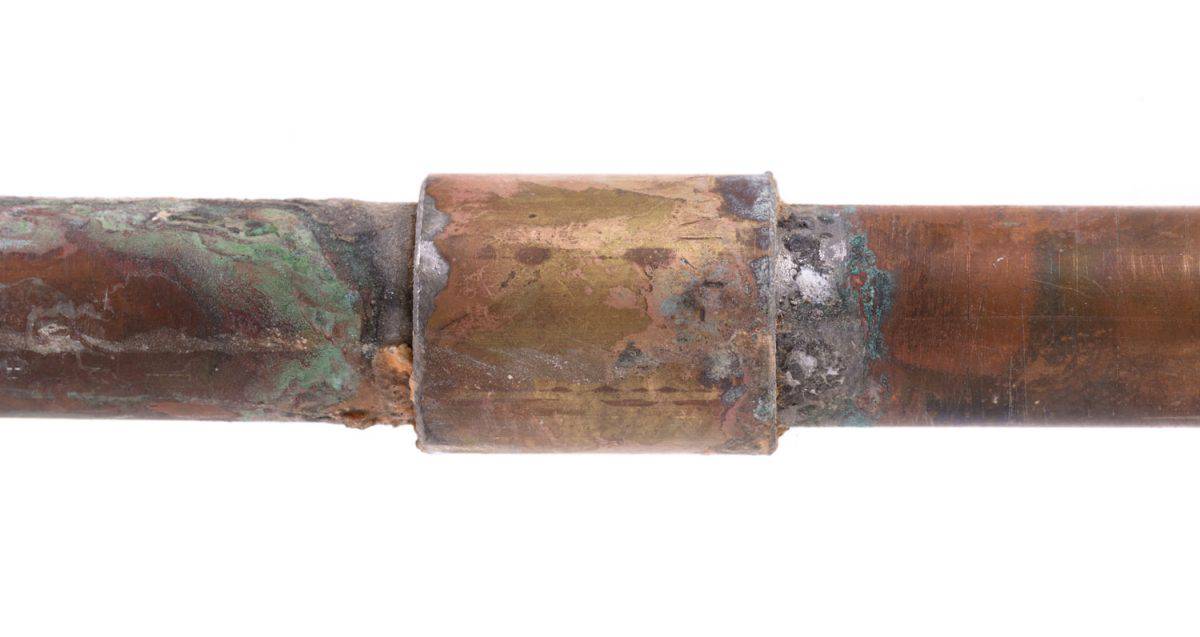
Water isn't the only thing capable of turning green inside your copper plumbing system. The pipes themselves can change to several different colors, including green. But what's the reason behind this green color change?
The greenish coloring on copper pipes is called patina. Several reasons can cause patina's occurrence, and not all of them are dangerous. However, they all require dealing with them before they become a widespread problem.
But most patina occurrences come from one of two causes:
Contact with Chemicals
If your copper pipes turn dark green or black, it's a result of likely contacting sewer gas. High sulfur levels will cause the color to darken to dark green or even black color. But it also could mean that your pipe has contacted non-compatible metals like galvanized steel.
This situation isn't overly dangerous, but it can be a hazard. It becomes an even larger issue when your copper is cheap and highly impure. These impurities will show up on the pipe's surfaces, which causes the darkened color.
It's also worth noting that cheap copper will crack faster. Plus, you don't quite know what it's made of and whether it's a potential health hazard. It's another reason why hiring a reputable plumber is so important.
Corrosion
As with turning water green, corrosion makes copper pipes turn green (patina). It results from oxidation that occurs from exposure to both water and air. Of course, short-term exposure isn't an issue, but after extended exposure, the patina will form.
Patina isn't harmful at first, but left untreated will cause pipe corrosion and bursts. So it's best to take care of any patina as soon as possible to avoid a sizeable future issue.
Do Green Copper Pipes Need to be Replaced?
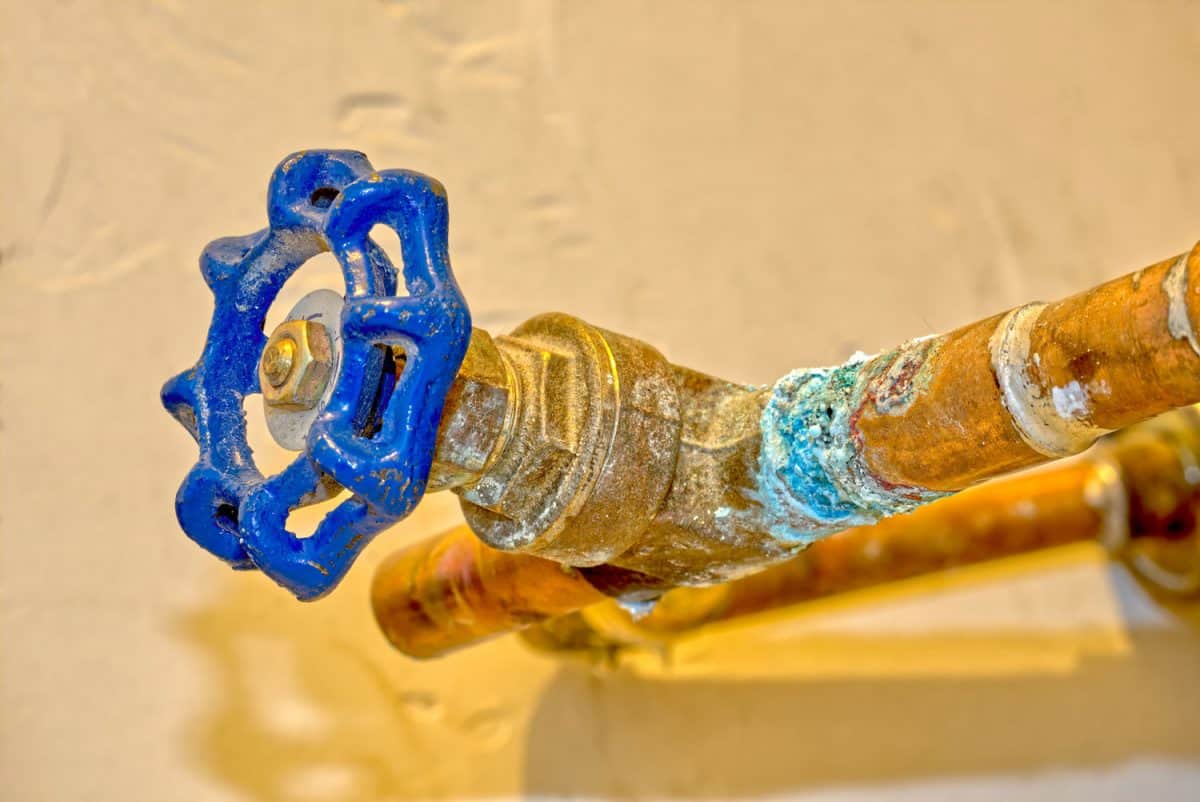
Green copper pipes don't automatically need replacing. If the corrosion is still reasonably minor, you can fix it by making a paste of vinegar, salt, and flour. Ensure the ingredients are equal parts and apply them to the green stain or spot using a clean cloth.
But please, avoid fixing the pipe if the corrosion is spread throughout most of its material. These pipes will need replacing with a new unit. However, you'll need to make sure the new copper pipe is compatible with your particular plumbing system.
It's essential to remember many pipers use either ½ or ⅜-inch pipe threads. If you're unsure, take the corroded pipe to a local hardware store and search for a same-sized replacement. But anyone who has a heavily corroded plumbing fixture should consult with a certified plumber.
How Long will Copper Pipe Last?
It depends on several factors, such as wear/tear and location. But most copper piping will last anywhere from 20 to 30 years without much issue. It's why builders and homeowners often choose it over other less durable plumbing materials.
Anyone looking for more information should check out our article, “How Long Do Copper Pipes Last And When To Replace Them?” It'll discuss everything about their durability and when they'll need replacing.
In Closing
We hope our discussions about copper pipes and green water answered your questions. You should now understand what green water inside your pipes means and the causes behind it. But if you still have a couple questions, please feel free to leave a comment. We'll make sure to answer each post as soon as possible. Thanks for reading!
